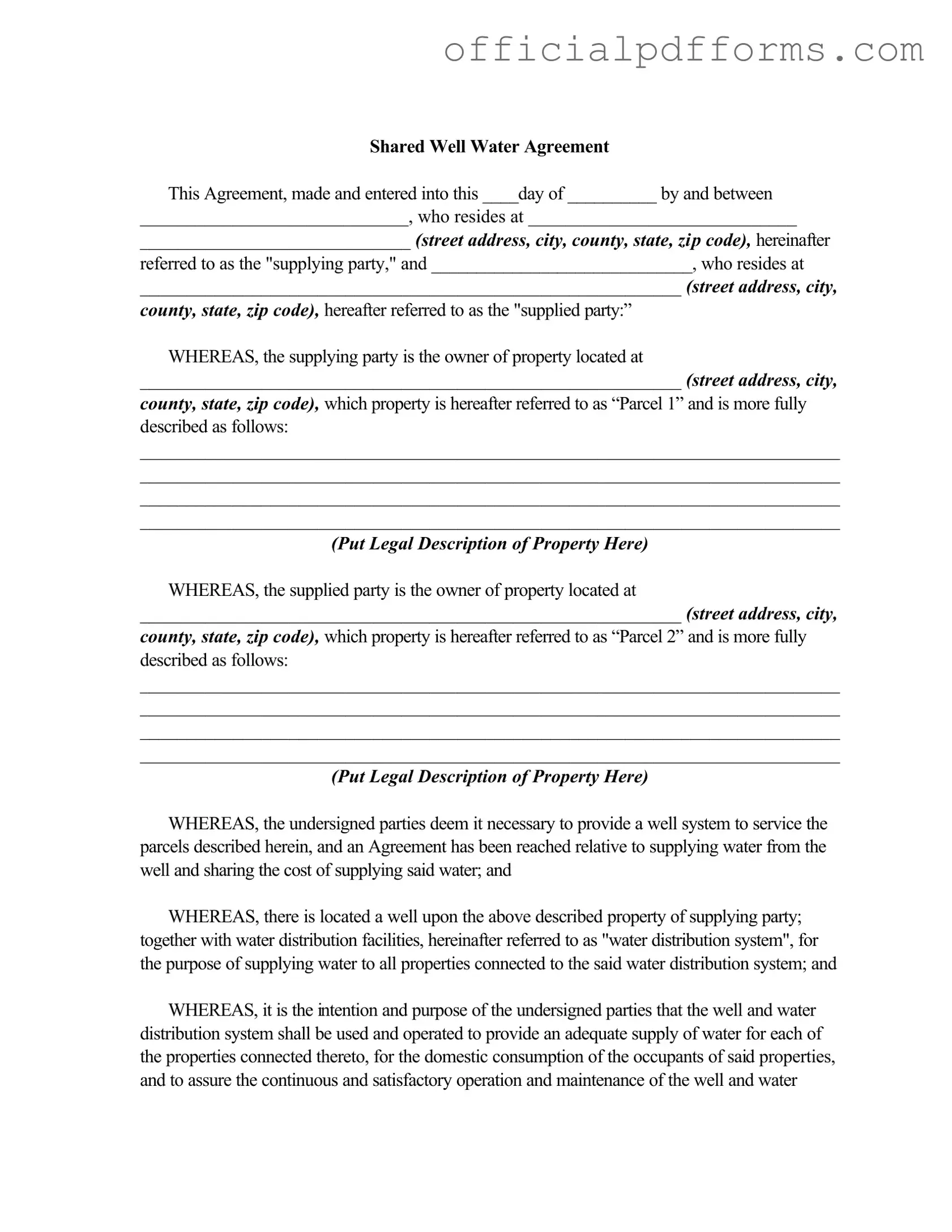Fill in a Valid Shared Well Agreement Form
The Shared Well Agreement is a legal document that outlines the terms under which two or more parties can share a well water system. This agreement ensures that all parties understand their rights and responsibilities regarding water use, maintenance, and costs associated with the well. To start the process, click the button below to fill out the form.
Access Form Online
